Welcome
I am delighted to bring you Issue 4 of ‘Traveling Through History’ today.
Today we travel to Shropshire to visit Stokesay Castle. I really enjoyed my research into this delightfully preserved manor house not far from the Welsh border. I hope you do too.
The day we visited in 2018 was a bit gloomy, but you can still see all that Stokesay as to offer.
One of the benefits of living so close to Oxford is that we can attend events and book launches, which are always fun. I talk about our latest trip in ‘Out & About’ below.
Looking for some good historical reading over the next few months? Check out my recommendation in ‘On My Shelf’.
We are gearing up to our annual summer holiday with friends to the Longleat Forrest. When we return, I will be telling you all about it but in the meantime, I hope that you enjoy Traveling Through History with me this month.
Michelle
Savvy Travel Historian
June Theme – Castles
Stokesay Castle
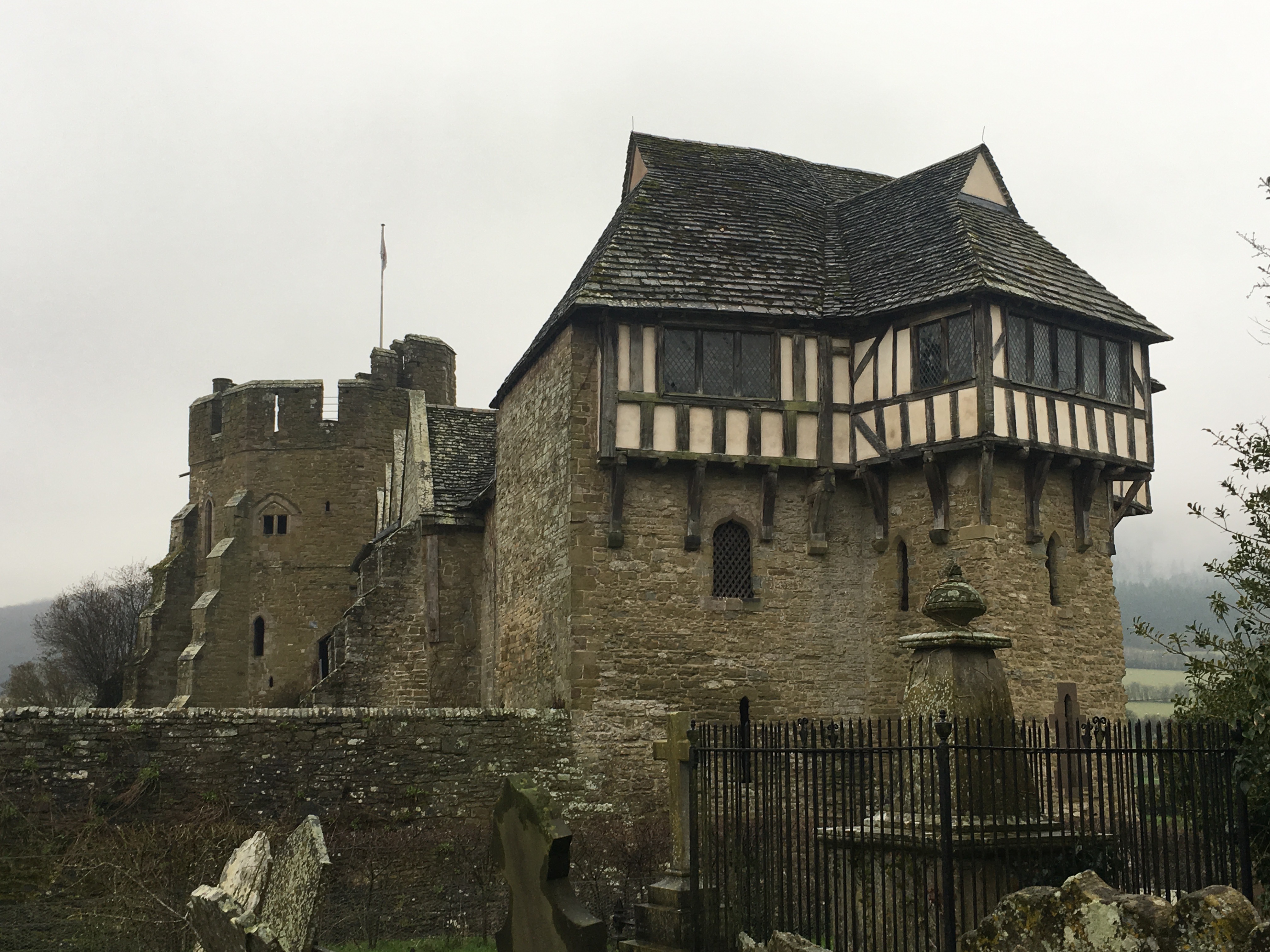
Background
Built in the late 13thC, Stokesay is one of the most well-preserved manor houses in England. It comprises a substantial great hall and tower as well the 17thC gatehouse, that was the only major addition to this magnificently preserved property.
Located west of Birmingham and south of Shrewsbury, in the county of Shropshire, this castle was built as a home for wealthy wool merchant Laurence of Ludlow.
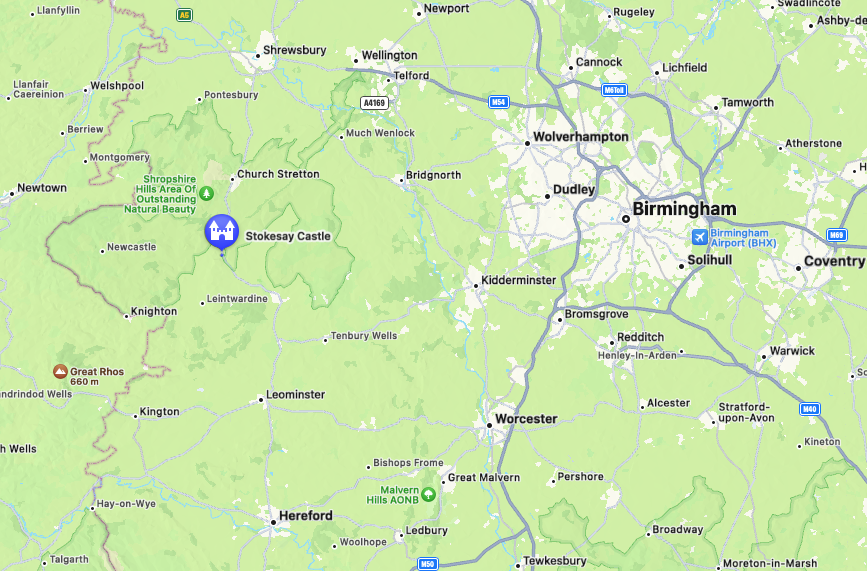
History
The area around the castle was first mentioned in the Domesday Book in 1086, listed as ‘Stoches’, which is an Anglo-Saxon word suggesting the presence of a cattle farm nearby.
The Welsh boarders had seen violence and war frequently as the Welsh and Anglo-Saxons fought for supremacy and this continued after 1066, with the Norman invasion. Eventually ‘Stoches’ was divided into two, called South and North Stoke.
During the reign of Henry I (1100-1135), the South Stoke portion was entrusted to Theodoric de Say and he leased this area from the Lacy family for over a century. It is from him that the castle got its name.
Not unlike the other castles we have discussed this month, the castle ownership changed hands several times, through marriage and the death of males without other male issue, until 1281, when the tenancy was sold to wool merchant, Laurance of Ludlow.
Laurance of Ludlow
Ludlow was a new kind of lord, having made his fortune from trade and not endowments from the monarch. His vast wealth enabled him to become a ‘country squire’ and this was made possible by the fact that England’s principal source of wealth at this time was the wool trade, with wool being its best export.
Wool was produced not just by farmers, but local magnates and the more than 1,000 monasteries in existence. What helped too, was the fact that wool from this area was of very high quality.
It is not known how much Ludlow paid for the Stokesay site, but the rule of thumb at the time was 10 years’ worth of the annum premium. It is therefore estimated to have been £266, which was a substantial amount given the average labourer earned 35 shillings a year (20 shillings to a pound).
Stokesay was well positioned for conducting business, being on the main road out of Shrewsbury towards the town of Ludlow (which was Laurance’s commercial base). He became so wealthy that he lent King Edward I £600 and provided him with taxation advice that angered other wool exporters, as he suggested tariffs on wool bails.
In November 1294, Laurance of Ludlow drowned off the Suffolk coast after the ship he was on was caught in a storm. It was carrying cash and wool fleeces worth £1,200 and these were mostly recovered, and his body returned to Ludlow for burial. His sons and grandsons continued to live in the properties he amassed in Shropshire and at Stokesay for over two centuries.
Not unusually for the time, the lack of male heirs meant that the Ludlow’s ceased ownership of the castle in December 1498.
Written accounts from about 1543, show that the site was being referred to as a castle, but the ‘title’ only became common in the 16th and 17th centuries. It is thought that the pretensions of the local Vernon family who owned it at the time, gave credence to the ‘castle’ title.
The Craven Family
Sir George Mainwaring purchased the property from the debt-ridden Henry Vernon in 1598 to settle his debts. He paid £6,000 for it. Despite not retaining the property for long, he made over double his money, selling it, in 1620, to the rich widow and son of the former Lord Mayor of London, Dame Elizabeth Craven for £13,500.
It was the Craven family who added the gatehouse we see at the front of the property today, in around 1640-1641.
The Castle remained relatively unscathed from the Civil War, as the occupants surrendered when asked. The only casualty were the surrounding walls (cut down to low fence size), so that it was no longer ‘defensible’.
Though a range of tenants leased the property over the next hundred odd years, by 1813, Stokesay was abandoned and almost a ruin. Through a local appeal to the Earls of Craven some restoration work was done, although more was needed.
The Allcroft’s
The castle was saved when John Derby Allcroft purchased the property for £215,000 in 1869 and he set about repairing and restoring the castle and its rooms. When he died in 1893, his family continued to care for it.
They did so until the extensive costs of maintaining the estate became too much and despite visitor numbers at this stage being over 16,000 a year in 1955, they decided they needed assistance.
Through an arrangement where ownership remained with the family until Allcroft’s daughter Jewell died, in 1986 it was handed to English Heritage. By this time the castle was tired and worn out and a four-year restoration project began.
What we see today, a well-preserved manor house, was the result.
Construction
The dendrochronological (tree ring dating) evidence suggests that the building of Stokesay, as we see it today, did not start before 1285.
Works included the construction of a great hall, 2 tower blocks, north and south, a solar block and kitchen. These all faced the central courtyard, surrounded by castle walls (which we know were lowered during the Civil War).
The Great Hall
The hall is a magnificent example of an open-hearted cruck roof, with three large wooden arches supported by two horizontal collars, all curved to transfer the weight of the roof to the sides of the building.
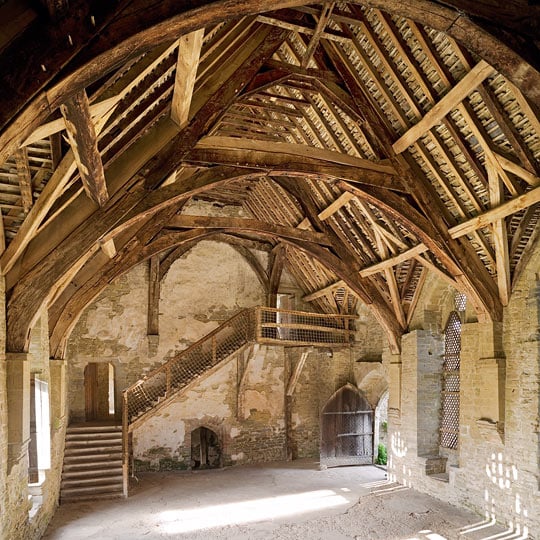
https://www.english-heritage.org.uk/visit/places/stokesay-castle/history-and-stories/description/
The large number of windows was unusual for the time as they were expensive, but they bring a good amount of light into the space.
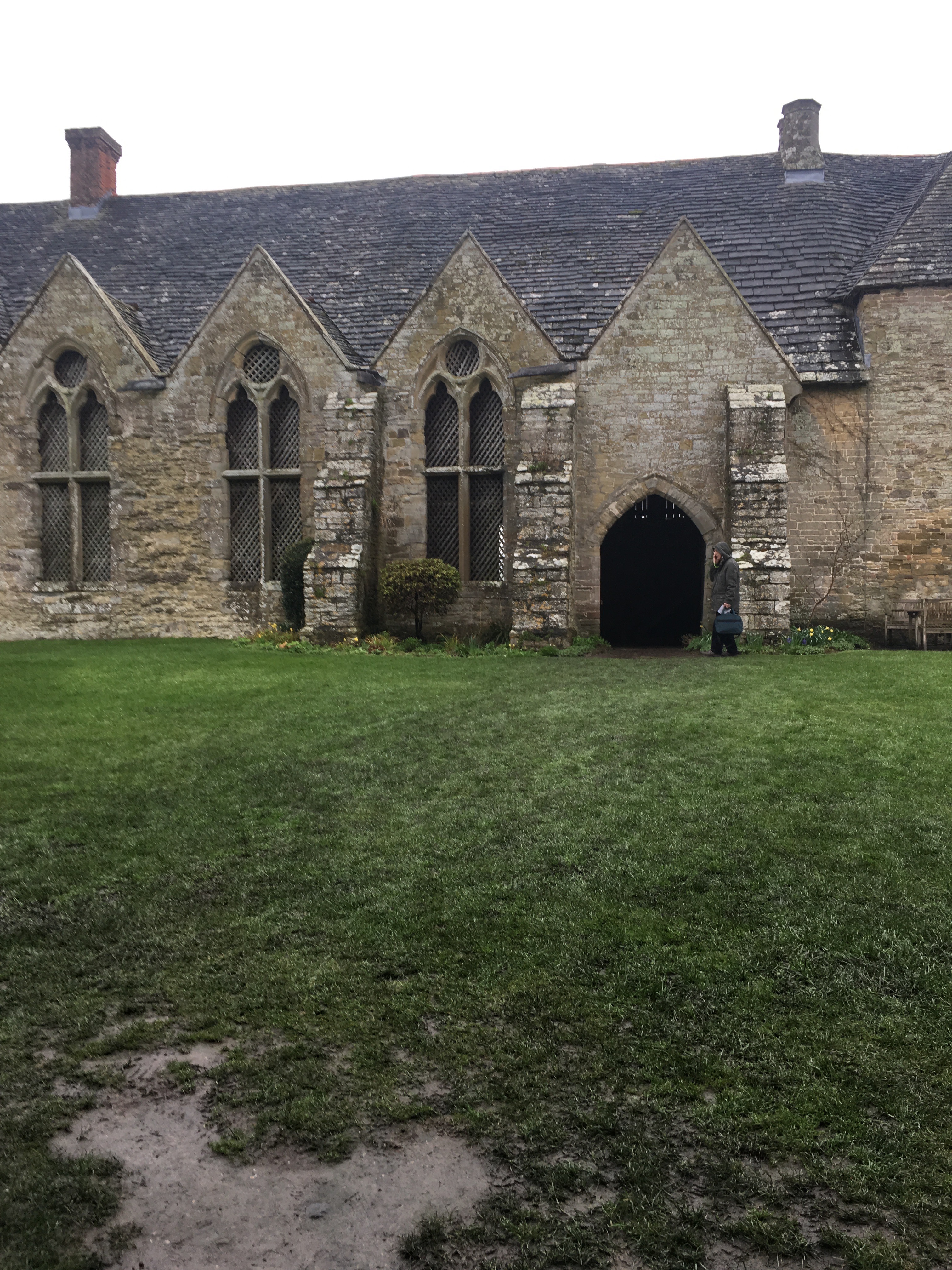
It would have been used for entertaining and it would not have been unusual for up to 25 guests to have been seated around tables within it.
Solar Block
It is likely that the two-story solar block was used as private family accommodation by Laurence of Ludlow before the South Tower was constructed. Large windows, with views over the countryside were placed in the upper floor and the main living space also boasts an intrinsically carved stone fireplace.
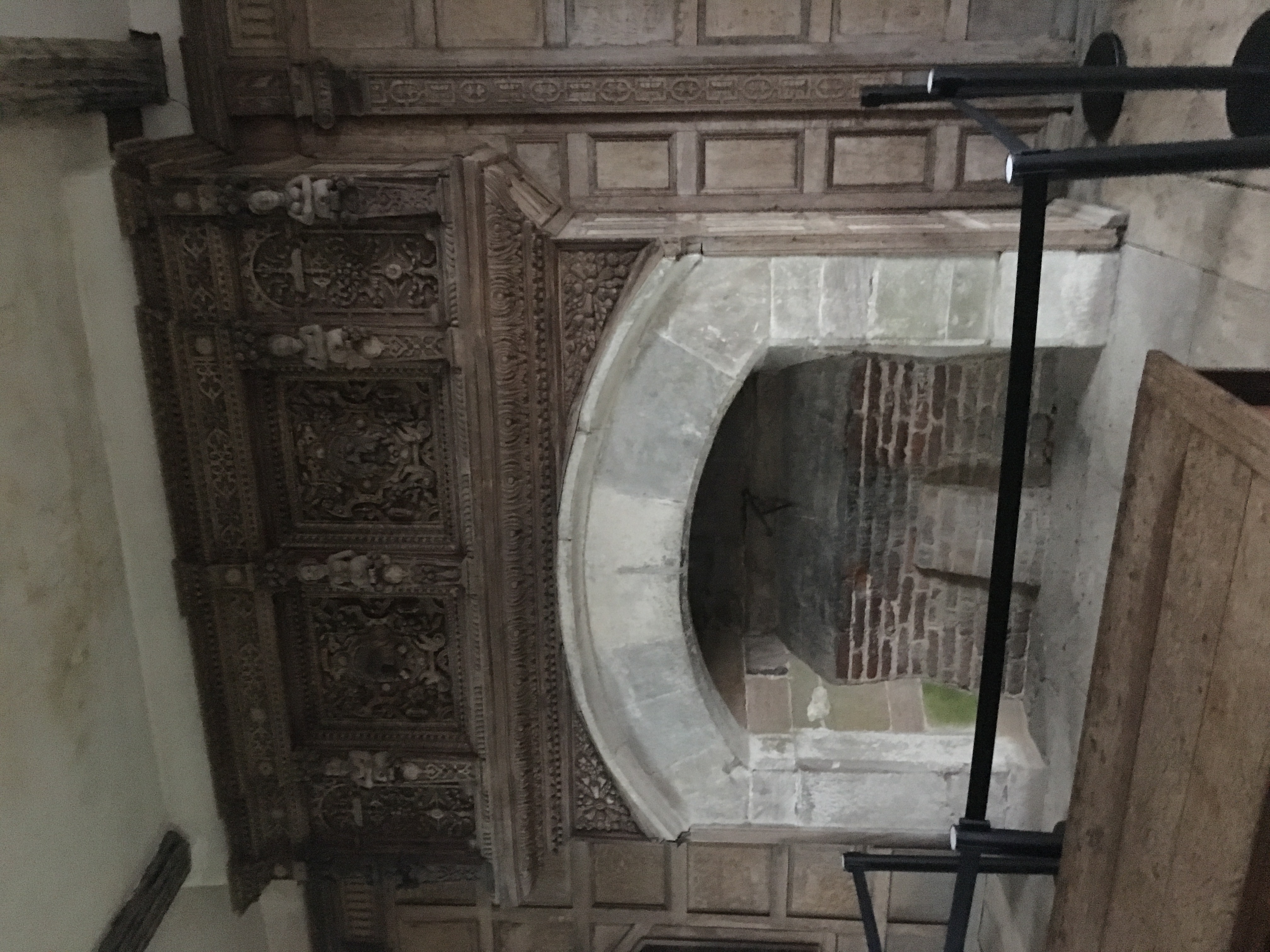
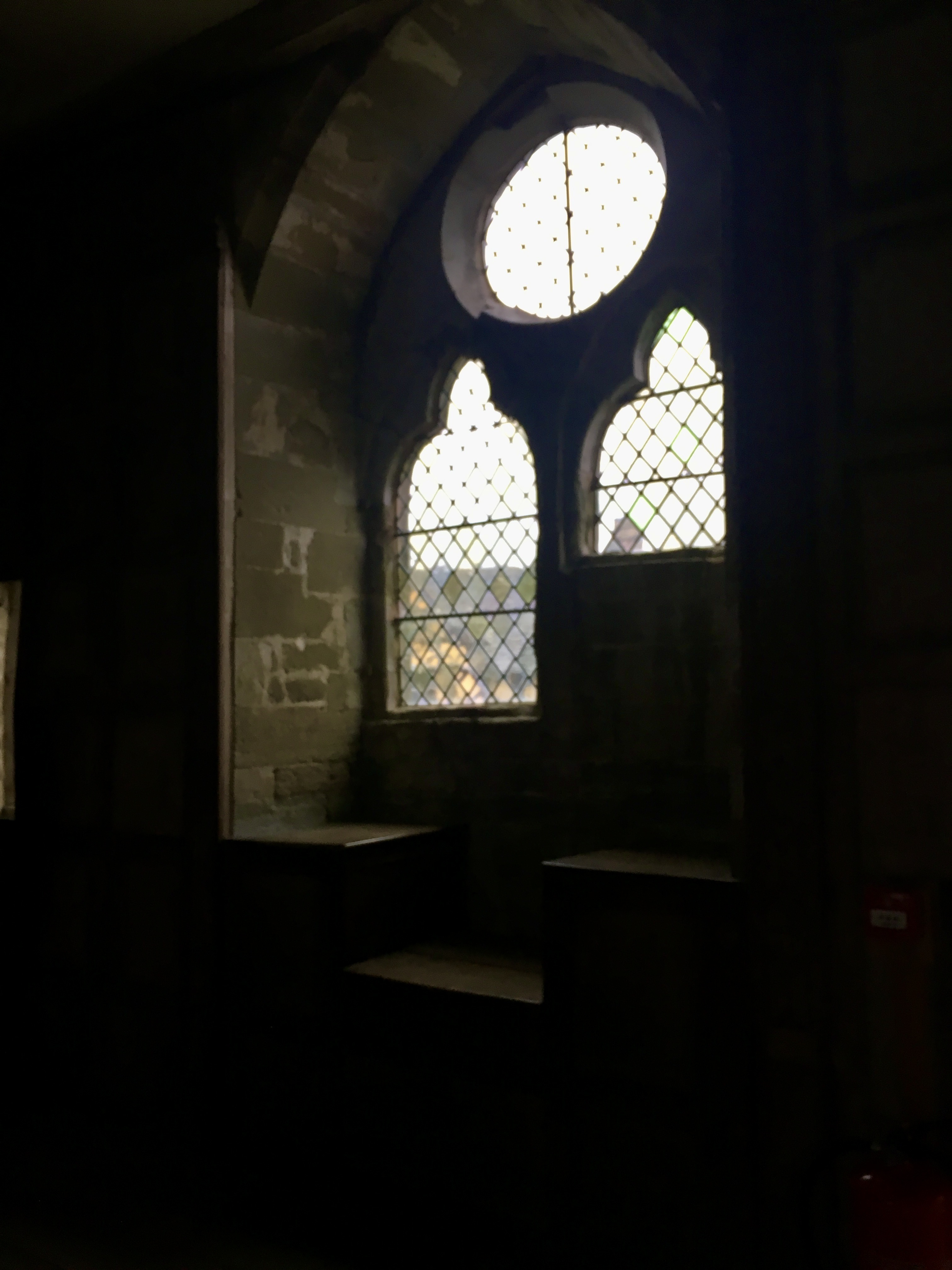
South Tower
The building of the South Tower could have been for several reasons. Ludlow and his wife had six children, so it may have been to provide additional accommodation, but as his wealth increased, a display like this was no uncommon to show the area of his success.
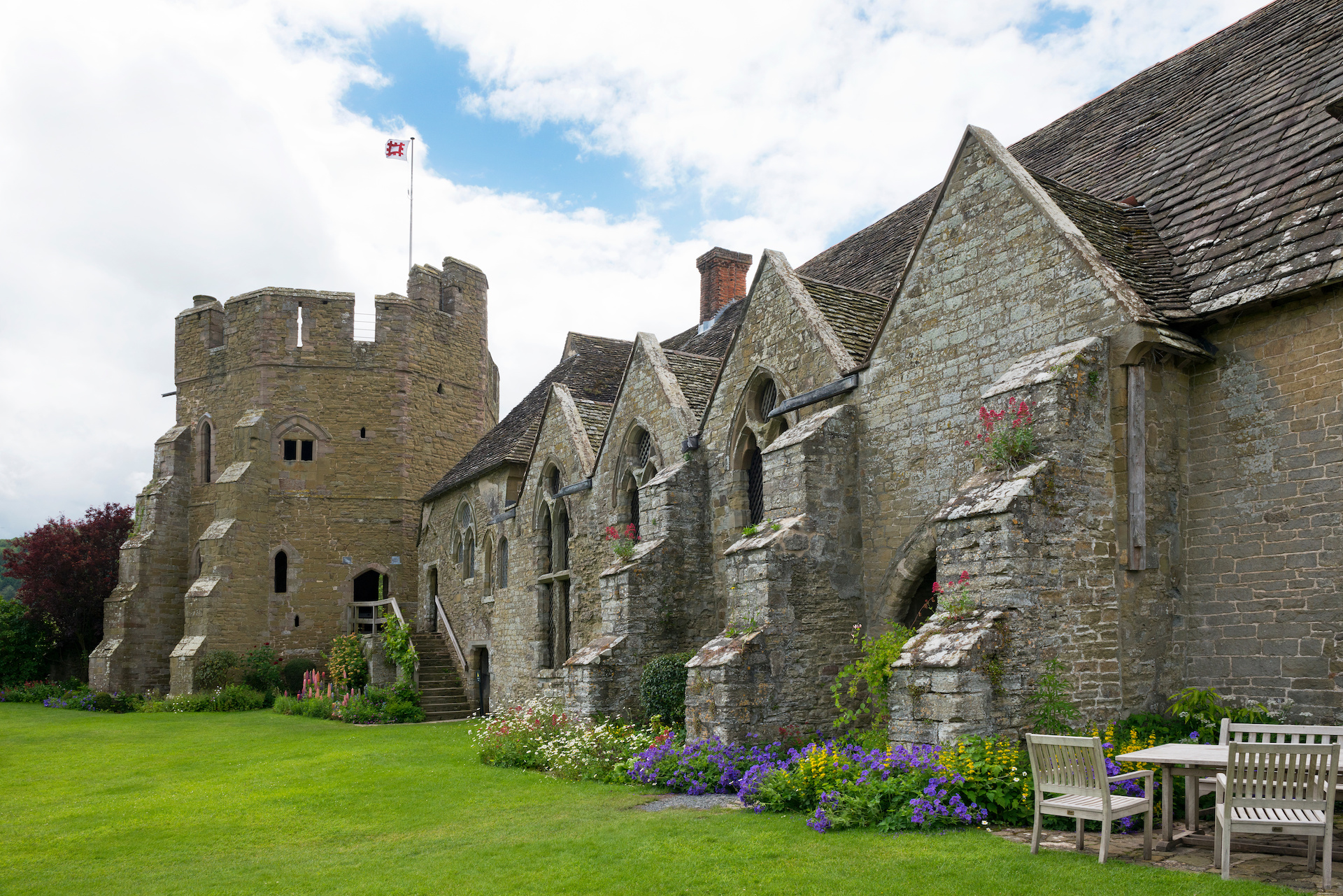
The roof terrace offers great views over the Shropshire countryside.
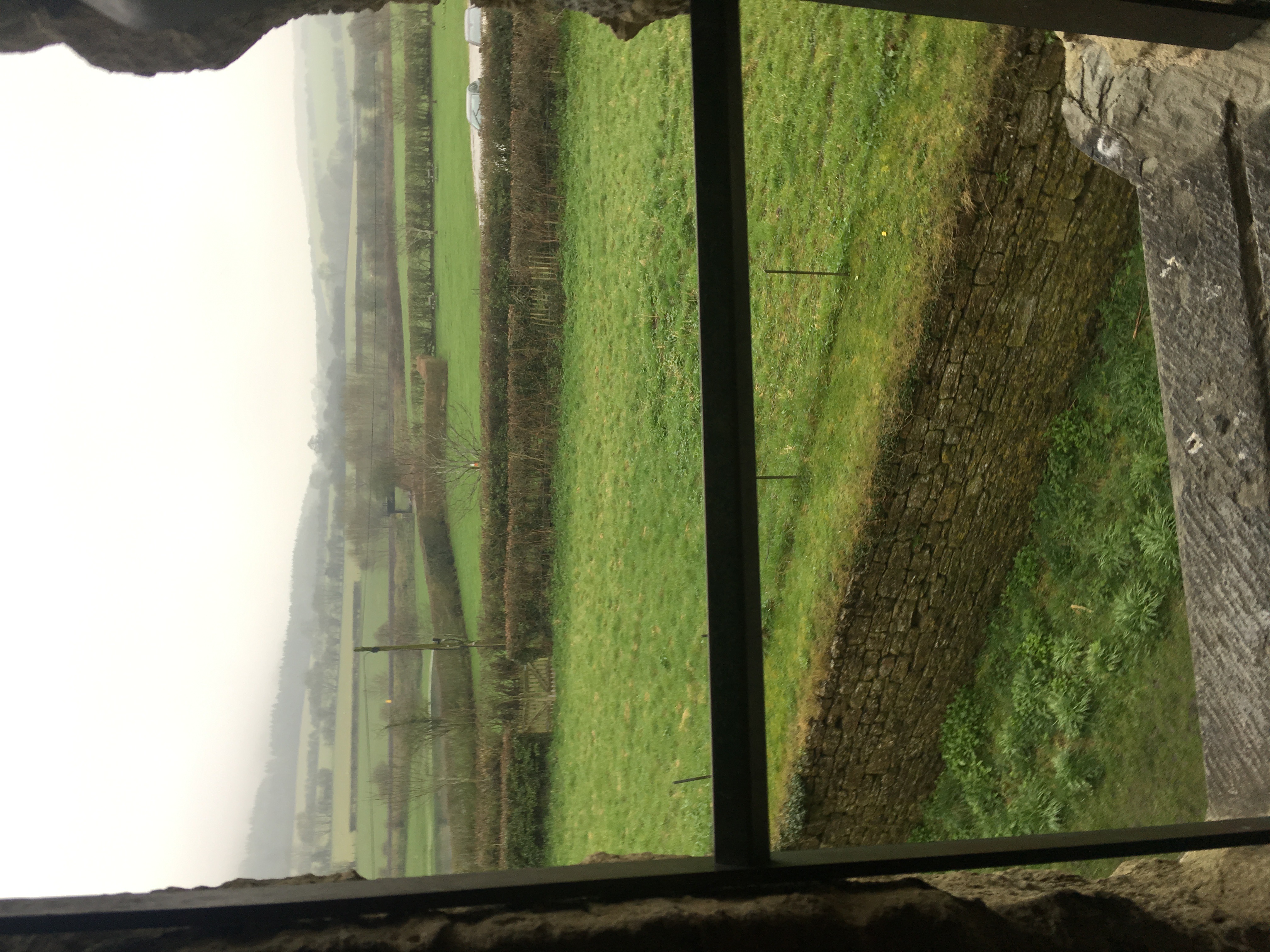
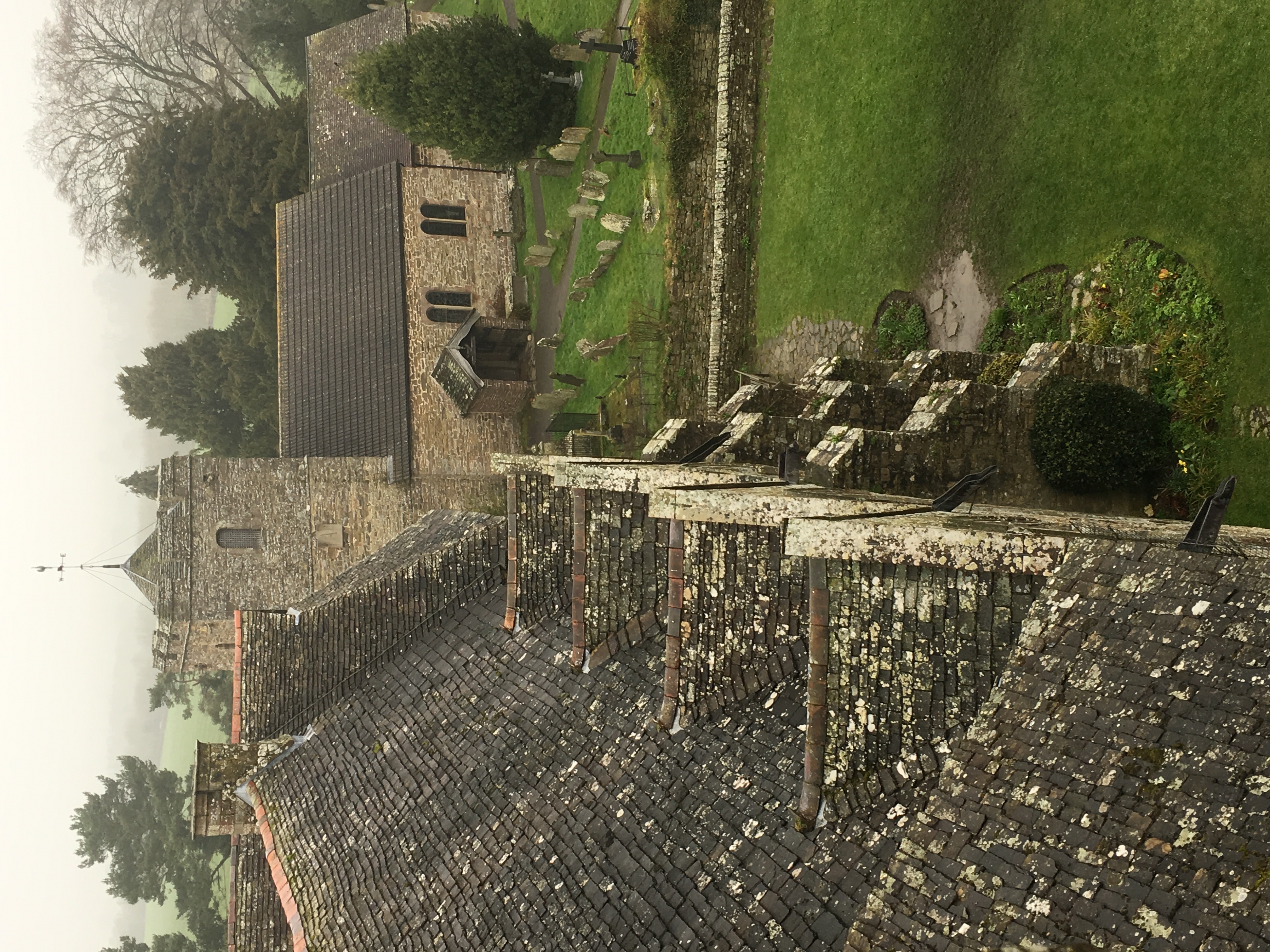
North Tower
The North Tower staircase (as seen in the photo of the great hall above), is one of its most striking features and allows access to the upper floor of the tower.
It is late 13thC and made by the same craftsman who did the roof of the hall, which is know from the same carpenter marks left on both structures.
Additions made in the 17thC covered up the original roof line in the upper floor, which have now been uncovered, but the size of this room remains the same as it was originally built.
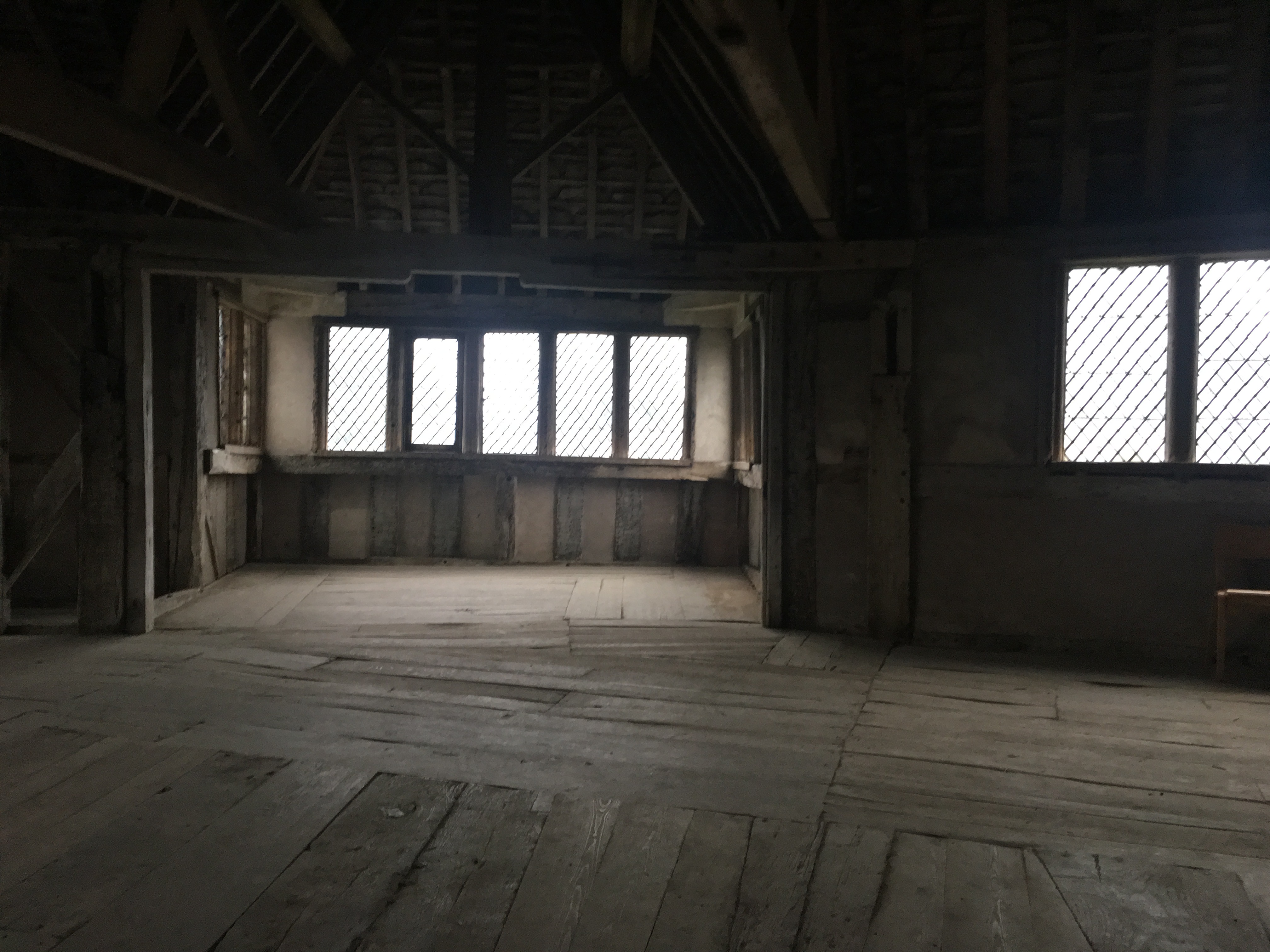
The Gate House
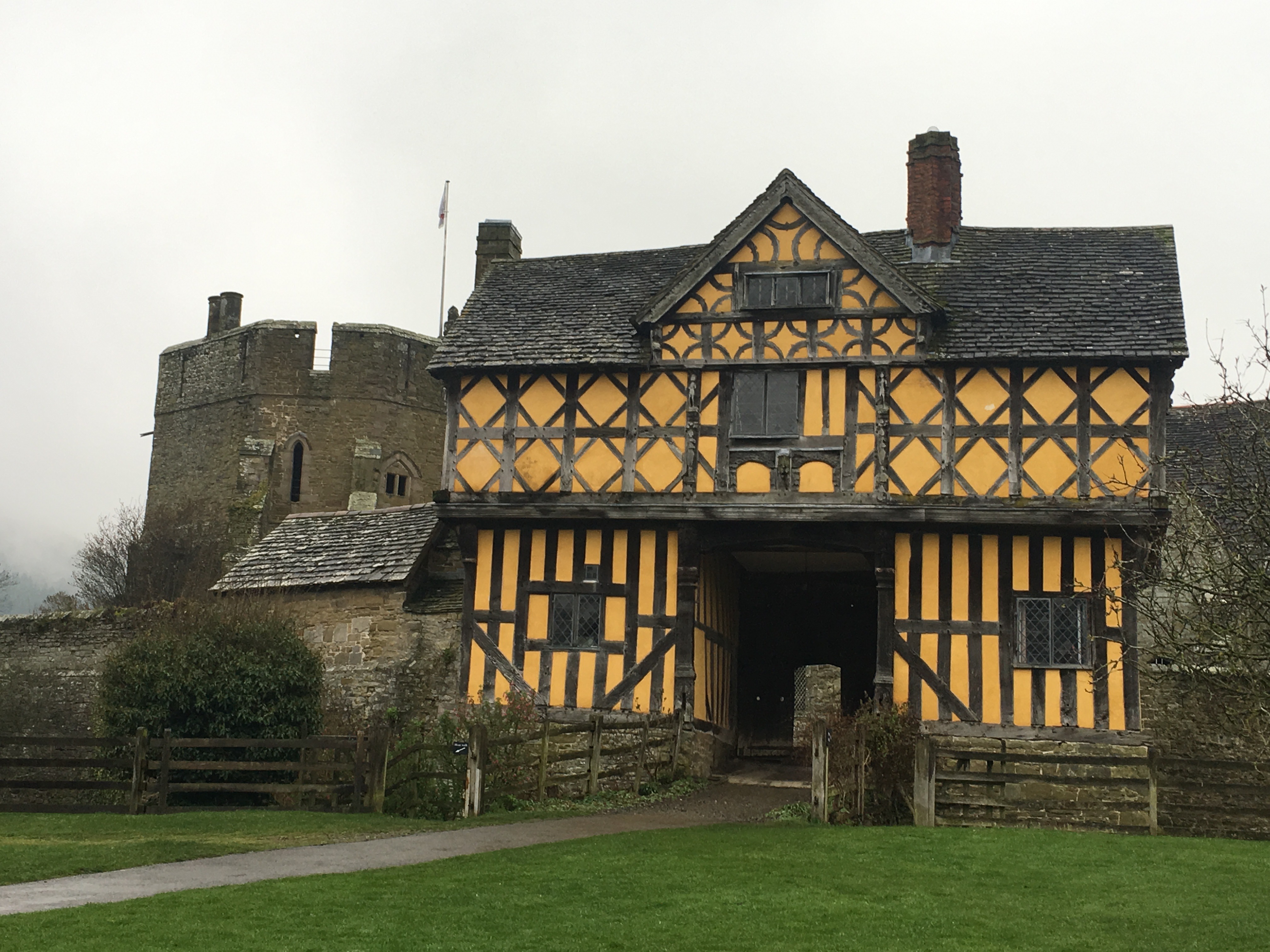
It is likely that the gate house we see today, built in the 17thC (1640-41), replaced a stone one that would have been constructed when the castle was built.
It’s two-story design, with the upper level hanging out over the bottom, was typical for this time, as is the ornamental carvings above the doors and windows showing biblical scenes of Adam and Eve, a serpent, angels and dragons.
St John the Baptist Church
Just outside the castle walls lies the St John the Baptist church and pre-dates Stokesay; built during Norman times. It was damaged during the Civil War but was rebuilt.
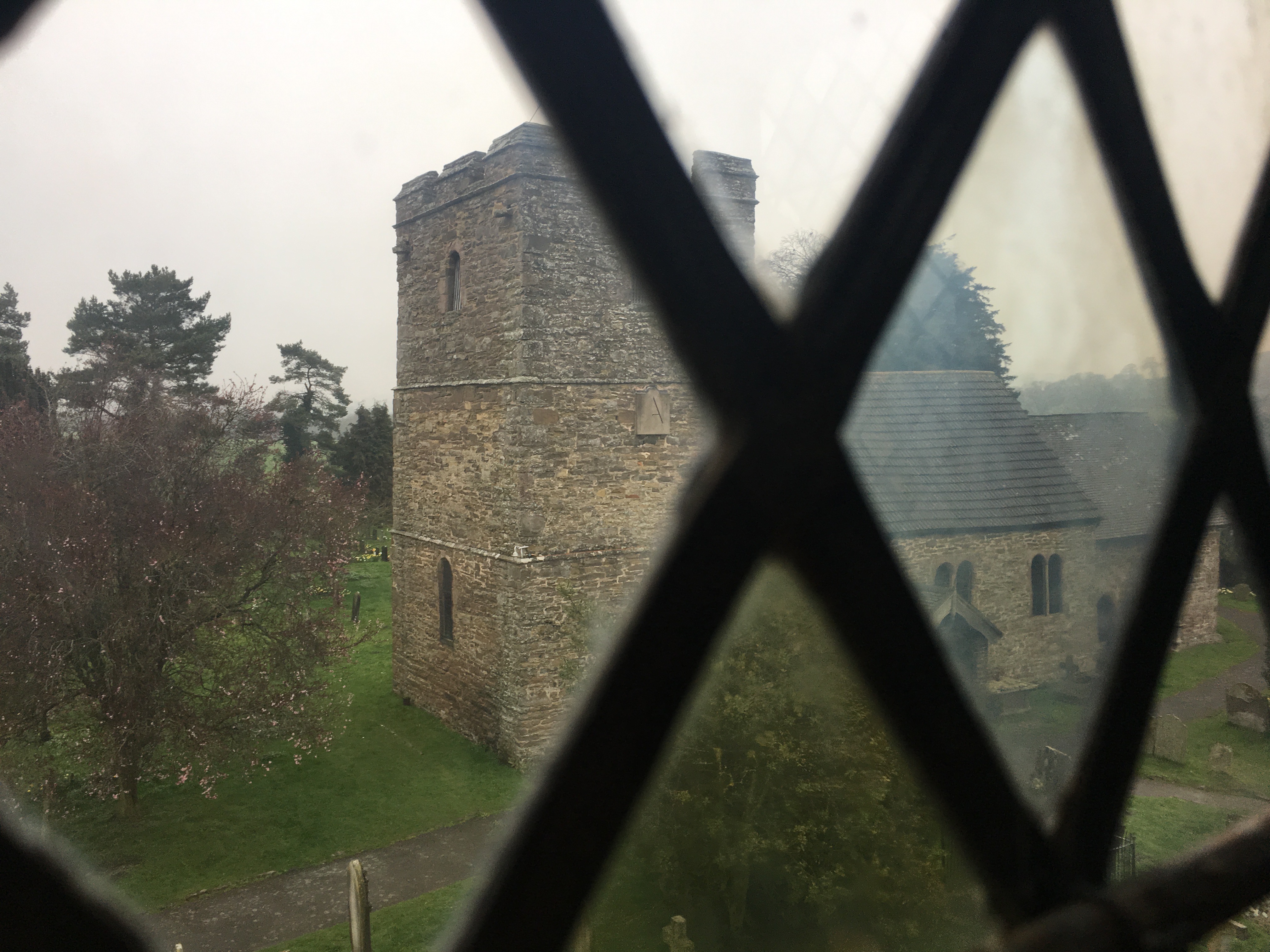
Visiting the Castle
The castle is open every day during the summer months from 10am – 5pm.
November until early February only on weekends – 10am – 4pm (aside from some additional opens during school holidays).
From February – Wednesday – Sunday – 10am – 4pm.
English Heritage operate a car park next to the site and there is also a newly competed tearoom offering a range of refreshments.
Relevant Travel Information:
Purchase your tickets here:
https://www.english-heritage.org.uk/visit/places/stokesay-castle/prices-and-opening-times/
Castle Website:
https://www.english-heritage.org.uk/visit/places/stokesay-castle/
Facilities Available:
https://www.english-heritage.org.uk/visit/places/stokesay-castle/plan-your-visit/facilities/
Full Castle History can be found here:
https://www.english-heritage.org.uk/visit/places/stokesay-castle/history-and-stories/
Museum Corner
National Portrait Gallery
On June 28, 1838, Queen Victoria was crowned in Westminster Abbey. This is her coronation portrait which is in the National Portrait Gallery in London.
The gallery has just re-opened followed a three-year renovation and I will feature it in a future issue when I go and visit.
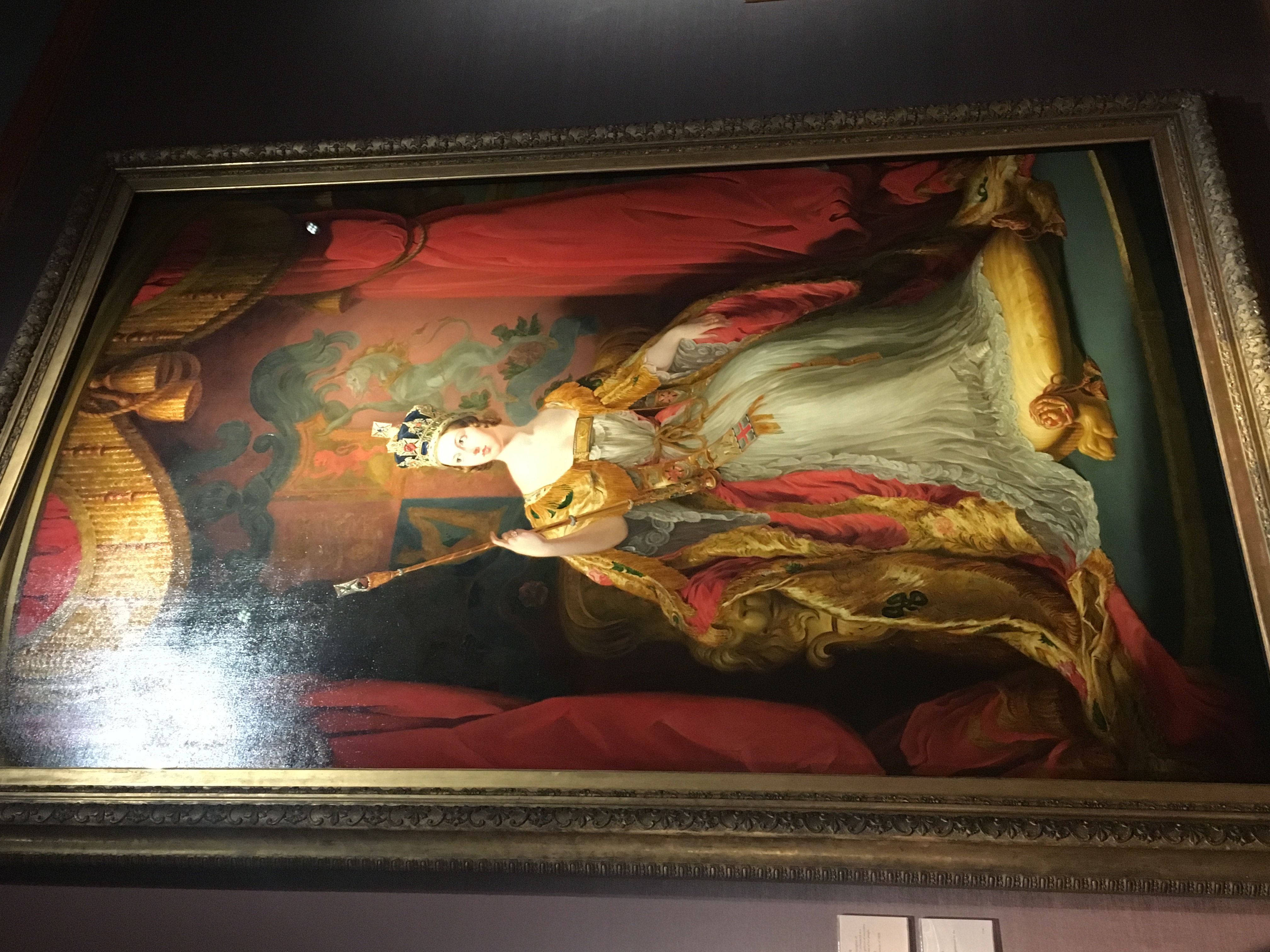
On My Shelf
Want to learn more about Henry VIII and his six wives? Alison Weir’s ‘Six Tudor Queens’ series (that I own) are an excellent deep dive, with an historical novel bent to them.
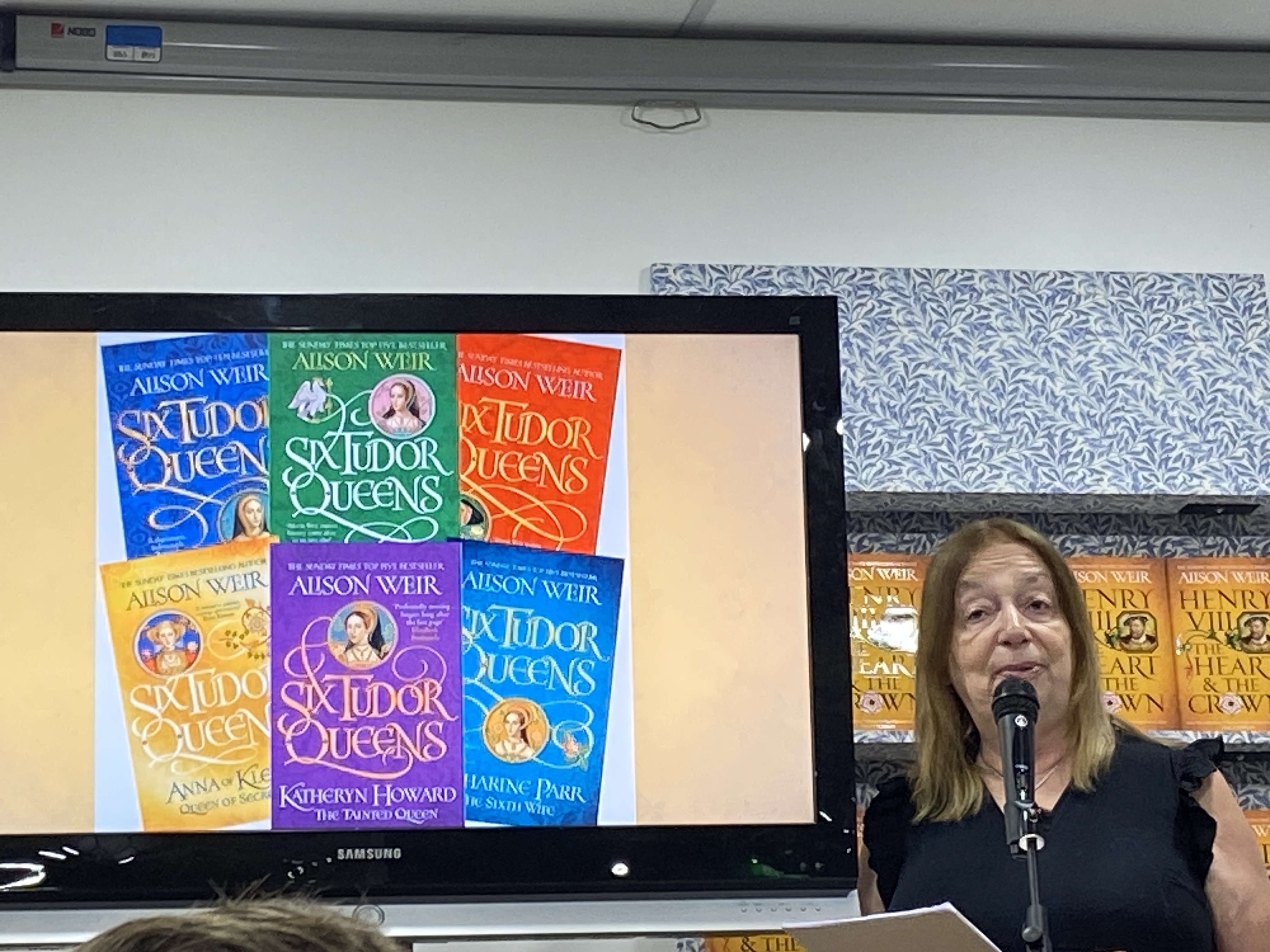
Out & About
Last week we were in Oxford for the book launch of Alison Weir’s new novel “Henry VIII: The Heart and the Crown”.
Here’s the publisher’s summary:
A young boy grows up dreaming of knights and chivalry. Harry is the second son. He is never meant to rule. But the death of his brother changes everything, and great destiny awaits this young prince. One day he will be the most infamous king in English history.
Henry VIII. His story.
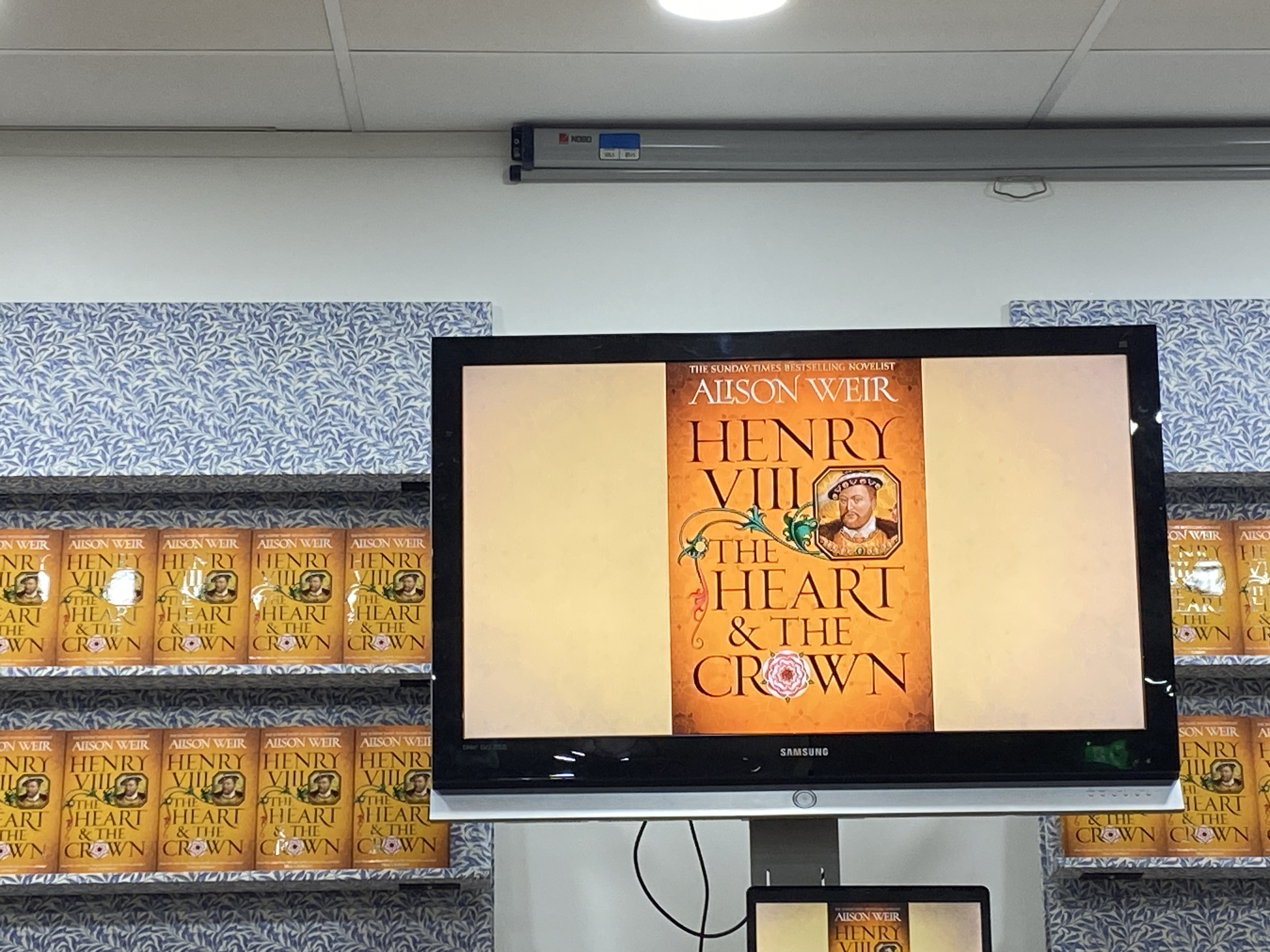
This Week in History
June 28
1491 - Henry VIII is born in Greenwich Palace
1838 – Victoria is crowned Queen
1914 - Franz Ferdinand is assassinated leading to WWI
June 29
1613 - Shakespeare’s Globe Theatre in London burns down during a performance of Henry VIII
1762 – Tsar Peter III divorces wife Catherine the Great
1964 – Civil Rights Act passed in the US Senate
June 30
1860- Charles Darwin’s Theory of Evolution is debated at the University of Oxford Museum.
1894 – Tower Bridge opens across the Thames
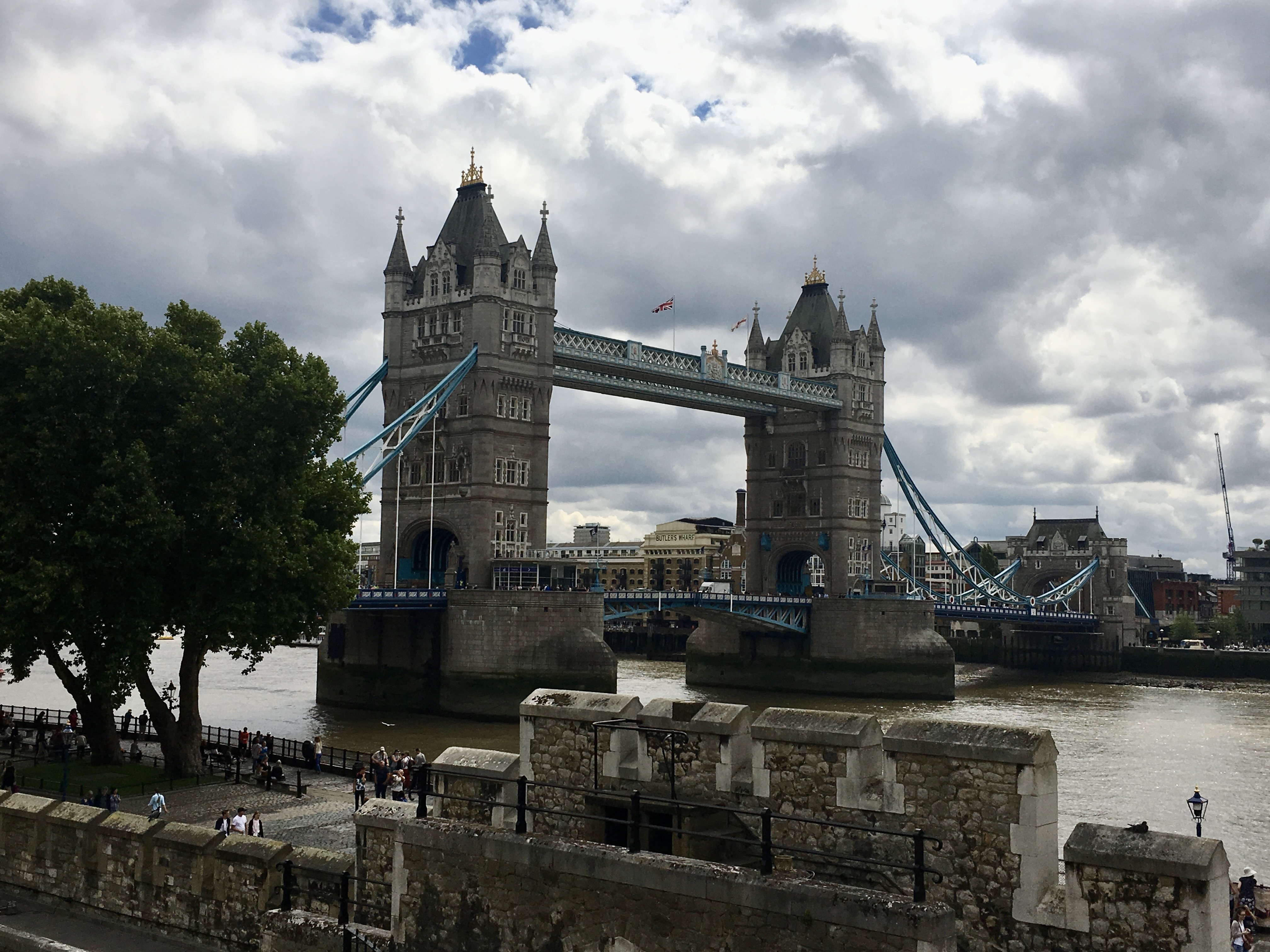
July 1
1200 – Sunglasses are invented in China
1798 – Napoleon’s fleet reaches Alexandria in Egypt
1916 – The Battle of the Somme in WWI begins
July 2
1865 – The Salvation Army is founded
1937 – Amelia Earhart goes missing over the Pacific Ocean
July 3
1886 – Karl Benz drives the first automobile in Germany
1964 – Wimbledon Men’s Final – an all-Aussie affair. Roy Emerson defeats Fred Stolle
6-4, 12-10, 4-6, 6-3.

Michelle is a speaker, author, content marketer, historian and mother of 3 boys.
After 25 years in business and as the ‘Content Marketing Queen’ for the past 12 years, she has helped countless small businesses understand and develop their content strategies and focus on a customer first approach.
Savvy Travel Historian is her passion project, and her weekly newsletter is available on Substack, Paragraph and Mirror. The latter two allows you to collect each Issue as an NFT.
Michelle is co-host of the Web3 By Three Podcast, a weekly show which talks about current stories in the Web3 space and how it applies to B2B marketing, sales and operations. The show is recorded live every Wednesday at 4pm EST/ 9pm UTC on LinkedIn, YouTube & Twitter Spaces.
You can follow Michelle in these places:
Savvy Travel Historian Instagram
Content Marketing Queen Website

